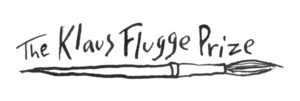
An interview with Victoria Rock, Founding Children’s Publisher & Editor-at-Large at Chronicle Books, and editor of First Snow by Bomi Park.
First Snow by Bomi Park is one of five books on the shortlist for the 2017 Klaus Flugge Prize. The judges admired the way Bomi Park conveys a sense of silence through her artwork, and makes a real emotional connection with the reader. The book feels both comfortably traditional and current.
When did you first come across Bomi’s art and what was it about it that caught your eye?
I was shown First Snow by a Korean publishers agent that I met at the Bologna Book Fair a few years ago. What first caught my eye was the simplicity of the palette. The art also has an incredible balance of graphic punch and softness, a result of the limited colour combined with the soft, tactile quality of the medium. But mostly it was the character in the book (and her adorable dog companion). She is so sweet and classic, but not at all outdated or saccharine.
Which is your favourite spread in the book and why?
That’s a tough question because in many ways it is the sequencing of the images that add up to the whole. If I had to narrow to 3 images, it would be the image of the train, of the animals in the forest and the closing image.
The train, which could feel so incongruous, gives such an energy to this image. By its rushing to the right, we feel the sense of the little girl barrelling forward as well - hers is no idle playing in the snow - and we want to turn the page so we can see where both the girl and the train are headed. You can hear the swoosh of the train, the woosh-woosh of the dog shaking off the snow, the pat-pat-pat of the snow hitting the ground.
On the next spread, where the fantasy really kicks in, everything becomes much quieter. You can almost hear the curiosity of the animals, but because we know the girl is speeding forward like a train, we understand that she is completely unaware of the menagerie of onlookers.
But probably my favourite image is the last one. After all the movement and magic, the book closes with an image that is familiar, iconic really, to anyone who has ever been in the snow. Bomi Park’s composition here is spectacular. Because of the limited palette, our eye is drawn to the pop of the girl’s red scarf, so that while she occupies just a tiny portion of the spread, we notice her right away. Our eye goes to her first, and then to the wonderful expanse of snowy sky, which because of that expanse invites us to linger. Although the book has been filled with a lot of fantastical elements, it is ultimately about the ‘magic’ of the first snow.
What advice would you give to those wanting to make a career in children’s book illustration?
Well the old advice about reading, and in the case of picture books looking at, as many books as possible persists because it is true. Artists of all kinds learn from the masters who came before them. It’s not so much about paying attention to the what of their stories, but the how. Whether in words or images, every book has a structure, a pacing, a perspective. It’s about learning how books are built. Then when you are ready to build your own, you have to think about whether the what and the how of the book you have made are different from what’s already been done.

The Klaus Flugge Prize is funded personally by Klaus Flugge and run independently of Andersen Press.
Website maintenance & Copyright © 2024 Andersen Press. All Rights Reserved. Privacy & Cookie Policy.



